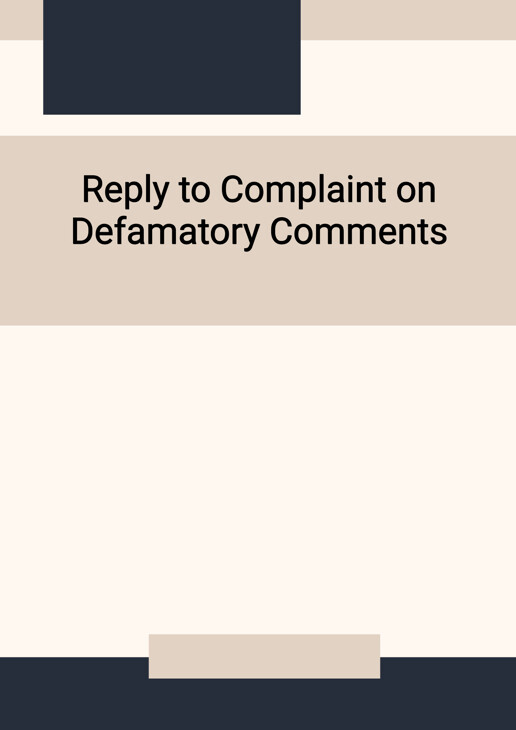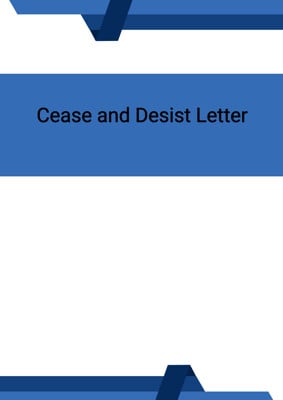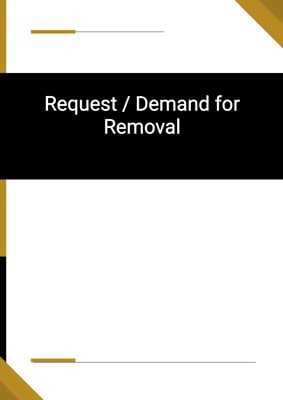How to Tailor the Document for Your Need?
01
Create Document
Click "Create Document" button and the document will be prepared with your account details automatically filled in.
02
Fill Information
Please fill in any additional information by following the step-by-step guide on the left hand side of the preview document and click the "Next" button.
03
Get Document
When you are done, click the "Get Document" button and you can download the document in Word or PDF format.
04
Review Document
Please review the document carefully and make any final modifications to ensure that the details are correct before sending to the addressee.
Document Preview
Document Description
The document titled 'Reply to Complaint on Defamatory Comments' is a response to a complaint regarding the publication of defamatory statements. The document begins with the account holder's personal information, including their first name, last name, and address. It is addressed to the recipient of the complaint.
The detailed introduction of the entire document explains that the recipient of the complaint has accused the account holder of publishing defamatory statements. However, the account holder denies these allegations and asserts that the statements were part of a private and confidential conversation with a friend. The account holder clarifies that they have not shared or published the content of the statement to any third parties.
The document is divided into four sections, each addressing specific points related to the complaint. In section 1, the account holder refutes the allegation of publishing defamatory statements to third parties, stating that it is entirely misconceived. Section 2 focuses on justifying the truthfulness of the statement and asserting that it was fair comment on a matter of public interest, not driven by malice. Section 3 mentions a document provided by the recipient, which the account holder believes to be forged, casting doubt on the recipient's good faith. Finally, in section 4, the account holder asserts that they have acted in a fair and equitable manner and warns the recipient of potential legal action and costs if they continue with the complaint or initiate frivolous proceedings.
Overall, the document provides a detailed response to the complaint, addressing each aspect of the allegations and presenting the account holder's perspective.
How to use this document?
1. Provide personal information: Fill in your first name, last name, and address in the designated fields at the beginning of the document. This ensures that your identity is clearly stated.
2. Address the recipient: Enter the name and address of the recipient of the complaint in the appropriate fields. This ensures that the document is directed to the correct person.
3. Deny the allegations: Clearly state that you deny the accusation of publishing defamatory statements. Explain that the statements were part of a private and confidential conversation with a friend and have not been shared with any third parties.
4. Justify the statement: Provide reasons and evidence to support the truthfulness of the statement. If the statement consists of opinion, explain that it is fair comment on a matter of public interest and not driven by malice.
5. Question the recipient's good faith: If applicable, mention any doubts or suspicions regarding the authenticity or good faith of documents provided by the recipient. Explain your reasonable grounds for such doubts.
6. Assert fair and equitable behavior: State that you have acted in a fair and equitable manner throughout the situation. Emphasize that the recipient's allegations are incorrect and disingenuous.
7. Warning of legal action: Clearly communicate that if the recipient continues with the complaint or initiates frivolous proceedings, you will take legal action and seek costs against them.
Note: This guidance focuses on addressing the specific points raised in the complaint and presenting a strong defense. It is important to consult with legal professionals for specific advice and guidance tailored to your situation.




